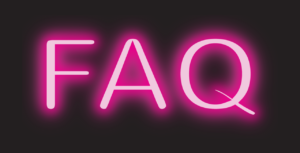Frequently Asked Questions.

Fascia is a type of connective tissue that surrounds and supports muscles, bones, and organs in the body. It is a three-dimensional web-like structure that provides a framework for the body, helping to maintain its shape and structure.
Fascia is important for several reasons. First, it helps to transmit forces generated by muscle contractions, allowing us to move and perform various physical activities. Second, it provides support and protection for internal organs, nerves, and blood vessels. Third, it contains a network of sensory nerves that help us to perceive and respond to changes in our environment.
In addition, fascia plays a role in the body’s immune system, and can also act as a storage site for water and other substances.
Recent research has suggested that fascia may also play a role in the development of chronic pain and other musculoskeletal disorders. As such, there has been growing interest in the study of fascia and its potential role in health and wellness.
Each treatment lasts around 35 minutes to an hour. The first appointment can last longer as I will be assessing to problems you are suffering with.
The Bowen Therapy appointments at my clinic will cost £40. I am available to travel to treat you anywhere in the north west of England. Please contact for more information and a quote.
The Bowen moves can be performed directly on the skin but can also be done through light clothing. The moves can be difficult to apply through certain materials such as woolly jumpers or denim jeans. Ideally, loose comfortable, cotton-based clothes should be worn. Access across the length of your spine, neck and shoulders will be needed, so a loose vest top or loose t-shirt and thin fabric leggings or shorts can be worn. Lycra tops, leggings and sports bras should be avoided if possible. In between the moves you will always be covered up to protect your modesty and keep you warm.
I normally recommend a course of one treatment a week for 3 weeks, this usually provides long lasting relief from symptoms. Some more serious issues or chronic conditions may need more than 3 treatments to solve the underlying cause.
A lot of my clients enjoy Bowen that much that they then go on to have a monthly maintenance session to keep on top of the benefits that Bowen gives. I advise that if a client re-injures or sustains a new injury to visit as soon as possible. Your body, already used to Bowen will respond really well and minimise the effects of your injury.
1. After the treatment and for the rest of the day do not sit longer than 30 minutes at a time. Just get up, have a stretch, and walk around the room for the rest of that day, obviously please stick to your normal bedtime routine!
2. Walk as much as you can for the next 3 days and for at least 15 minutes a day if possible.
3. Drink plenty of water for the next 3 days but also do try to drink plenty of water daily for hydration and good health.
4. Avoid stimulants, e.g. Coffee, tea, alcohol for the rest of the treatment day.
5. Avoid excesses of temperature on the areas I have treated ie. ice packs, electric blankets, or hot water bottles.
6. Have your bath or shower warm NOT hot.
7. Avoid any intense exercise, running, fitness workout or lifting anything heavy on the day of the treatment.
8. If you have been shown any exercises following your treatment, please remember to do them as they are for your benefit.
9. Avoid any other hands-on treatment for 7 days either side of a Bowen treatment as this will interrupt the Bowen healing process.
After a treatment, and in the following couple of days, you may experience what is known as a treatment response. This can include:
Excessive tiredness or feeling drowsy
Hot and cold flushes
Temporary worsening of symptoms
Aching and stiffness
Feeling thirsty
Emotional release
Increase in energy
General feeling of well-being
Sleeping for longer and/or feeling more rested
Consultation and first treatment is £65, then follow up treatment costs are based on the amount of time you need ranging from 25 minutes up to 55 minutes. This is to be arranged at time of booking.
Fascial Restrictions and Scar Tissue Breakdown:
- IASTM instruments effectively break down fascial restrictions and scar tissue.
- The ergonomic design of these instruments allows clinicians to locate restrictions and apply appropriate pressure to the affected area.
- Controlled microtrauma is introduced to the soft tissue, stimulating a local inflammatory response.
- Microtrauma initiates the reabsorption of inappropriate fibrosis or excessive scar tissue, leading to remodeling of affected soft tissue structures.
Adhesion Resolution:
- Adhesions within soft tissues, which may develop due to surgery, immobilization, repeated strain, or other mechanisms, are broken down.
- This process allows for full functional restoration to occur.
Stimulation of Healing Process:
- IASTM promotes blood flow and healing in the affected area.
- Compressive strokes from IASTM stimulate the healing process, aiding and speeding up recovery.
Conditions Treated with IASTM:
- Medial and lateral epicondylitis
- Carpal tunnel syndrome
- Neck pain
- Plantar fasciitis
- Rotator cuff tendinitis
- Patellar tendinitis
- And more